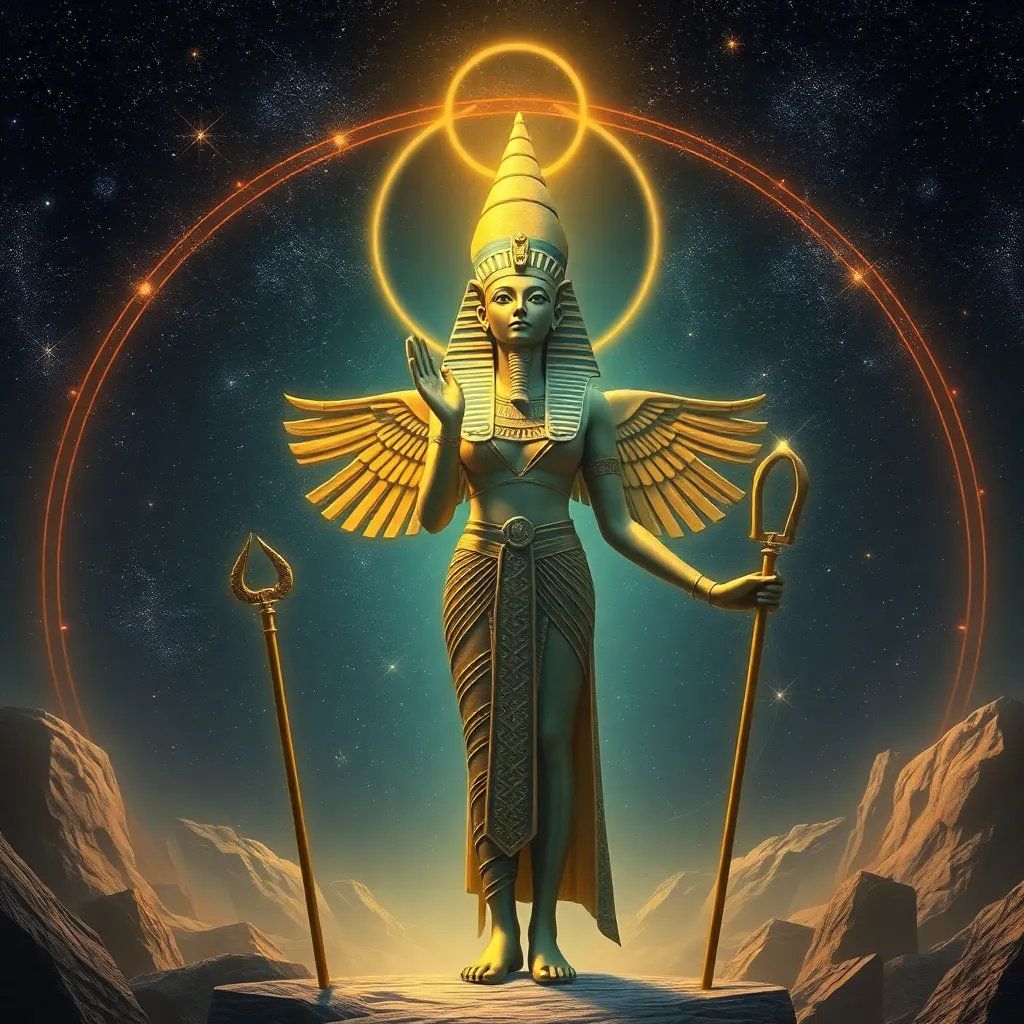The Role of the Goddess Ma’at: Order in the Universe
I. Introduction
In Ancient Egyptian mythology, the goddess Ma’at is a central figure symbolizing truth, balance, and justice. She is the embodiment of the cosmic order, a fundamental concept that governs both the universe and human society. The importance of Ma’at extends beyond mere mythology; her principles are woven into the very fabric of Egyptian law, governance, and daily life. This article aims to explore the multifaceted role of Ma’at in Ancient Egyptian culture and her enduring legacy in modern times.
II. Historical Context of Ma’at
Ma’at’s origins can be traced back to the earliest periods of Ancient Egyptian civilization, where she was revered as a vital force in maintaining harmony in the cosmos. Over time, her worship evolved, intertwining with the political and social structures of Ancient Egypt.
- Origins: Ma’at is often depicted as a woman with an ostrich feather on her head, symbolizing truth and balance. Her name itself signifies “truth” or “that which is straight.”
- Evolution: As the role of the pharaohs expanded, so did the significance of Ma’at. She became essential in the legitimization of the pharaoh’s authority.
- Key Texts: Ma’at is frequently mentioned in various inscriptions, including the Pyramid Texts and the Book of the Dead, which highlight her importance in the afterlife and moral order.
III. Symbolism of Ma’at
Ma’at represents more than just a deity; she encapsulates the principles of truth, balance, and justice that are vital for the existence of both the divine and earthly realms.
- Representation: Ma’at is often associated with concepts of harmony and equilibrium, serving as a reminder of the necessity of balance in all aspects of life.
- Iconography: Common symbols associated with Ma’at include her feather, which is used in the Weighing of the Heart ceremony, and the sistrum, a musical instrument that signifies her connection to order and harmony.
- Duality: Ma’at embodies both the creative and judgmental aspects of existence, acting as the force that creates the universe while also being the judge who maintains its order.
IV. Ma’at and Cosmic Order
The concept of Ma’at is fundamental to understanding the universe’s order in Ancient Egyptian belief. She is seen as the principle that governs not only human affairs but also the natural world.
- Cosmic Principle: Ma’at is the foundation upon which the universe operates, ensuring that chaos does not prevail.
- Relationships: Ma’at has a significant relationship with other gods, often depicted in mythology as cooperating with deities like Ra and Osiris to uphold order.
- Natural Cycles: The daily cycles of day and night, as well as the seasons, are viewed as manifestations of Ma’at’s influence, showcasing her role in the natural order.
V. Ma’at in Egyptian Society
The principles of Ma’at permeated every level of Ancient Egyptian society, influencing governance, law, and ethical standards.
- Governance: The concept of Ma’at was deeply ingrained in the administration of justice and the rule of law. Pharaohs were seen as the earthly embodiments of Ma’at, tasked with upholding her principles.
- Pharaoh’s Responsibility: The pharaoh was considered the chief custodian of Ma’at, and his rule was legitimized by his ability to maintain order and justice.
- Moral Standards: The teachings of Ma’at served as a guideline for ethical behavior, influencing the moral compass of society.
VI. The Weighing of the Heart Ceremony
One of the most significant aspects of Ma’at’s influence is evident in the Weighing of the Heart ceremony, a crucial ritual in the judgment of souls in the afterlife.
- Ceremony Description: In this ceremony, the heart of the deceased is weighed against the feather of Ma’at. A heart that balances with the feather indicates a life lived in accordance with Ma’at’s principles.
- Role in Judgment: Ma’at is present in this judgment, representing the ultimate arbiter of truth and justice in the afterlife.
- Implications: The outcomes of this ceremony not only determined the fate of individuals but also reinforced societal values regarding morality and justice.
VII. Ma’at in Modern Interpretations
Ma’at’s legacy continues to resonate in contemporary discussions of justice and order, reflecting her timeless relevance.
- Contemporary Relevance: Modern societies often draw parallels between Ma’at’s principles and current discussions surrounding justice, equality, and governance.
- Spiritual Practices: Some modern spiritual movements incorporate the teachings of Ma’at, emphasizing balance, truth, and ethical living.
- Resurgence: Literature and media have reignited interest in Ma’at, presenting her as a symbol of justice and moral order in a chaotic world.
VIII. Conclusion
In conclusion, Ma’at’s role as a goddess of order, truth, and justice is integral to understanding both Ancient Egyptian mythology and its societal norms. Her influence extends beyond ancient temples into the core of modern values, reminding us of the importance of balance and order in our lives today. The legacy of Ma’at serves as a beacon, guiding individuals and societies toward harmony and justice, relevant in both the ancient world and contemporary society.




